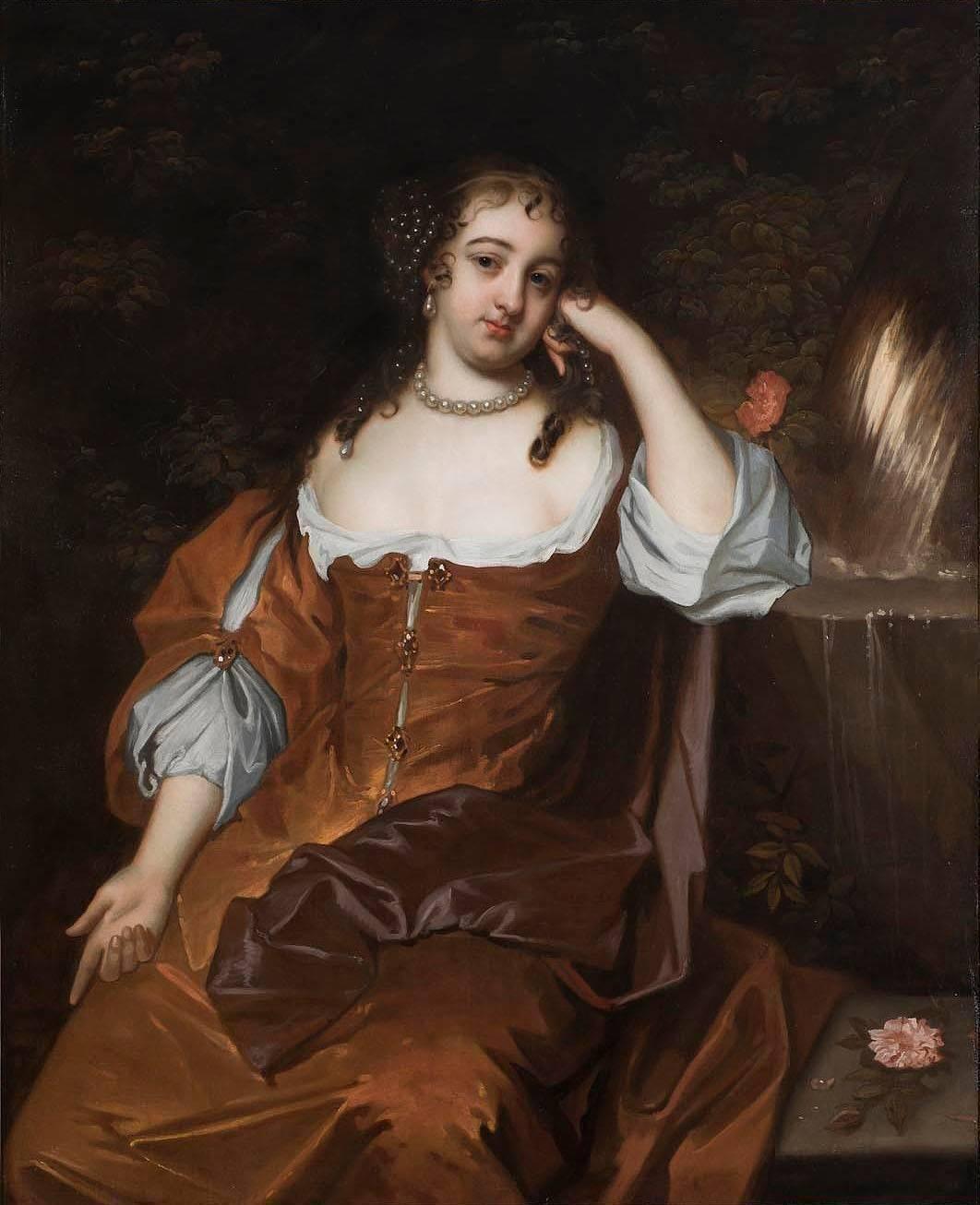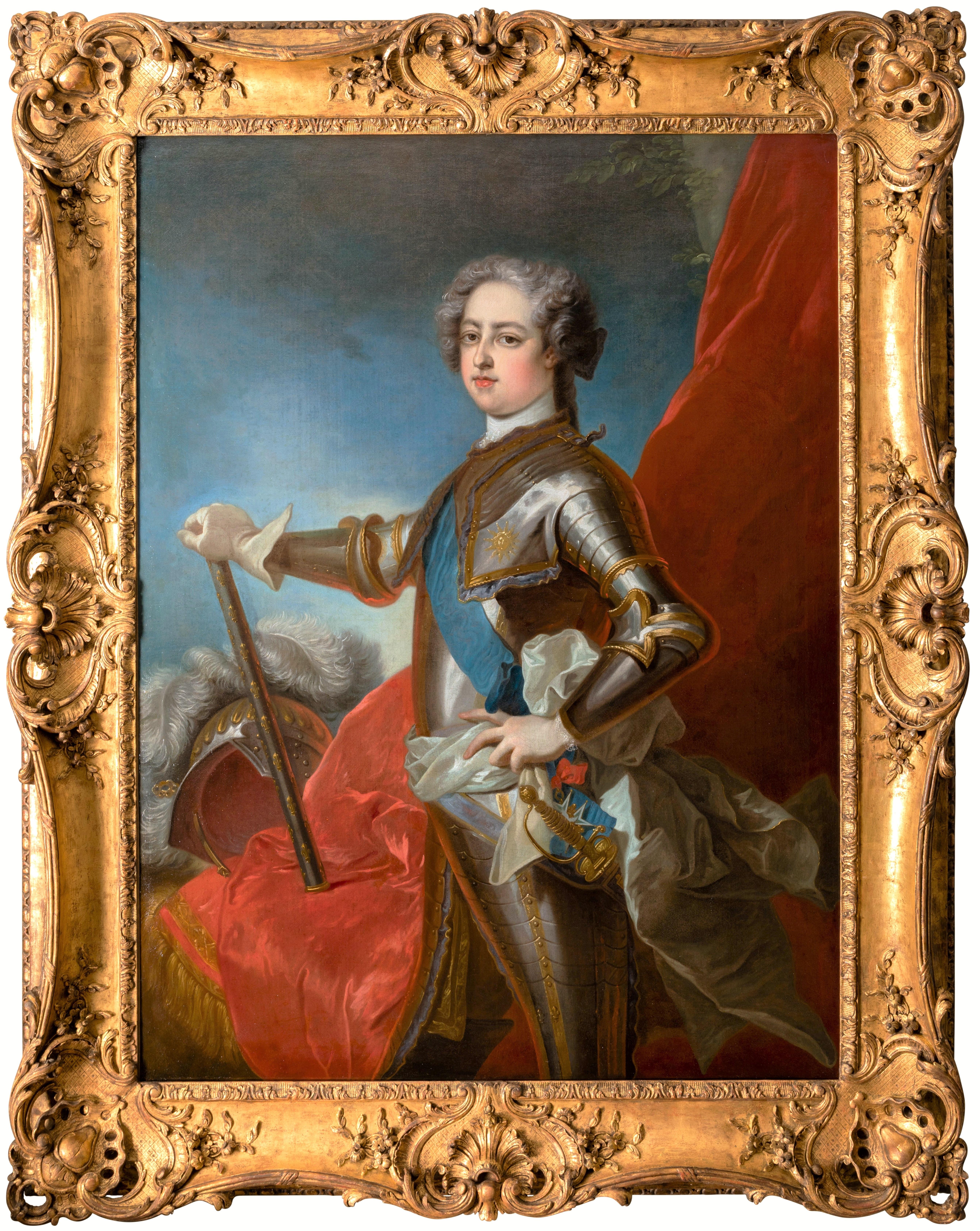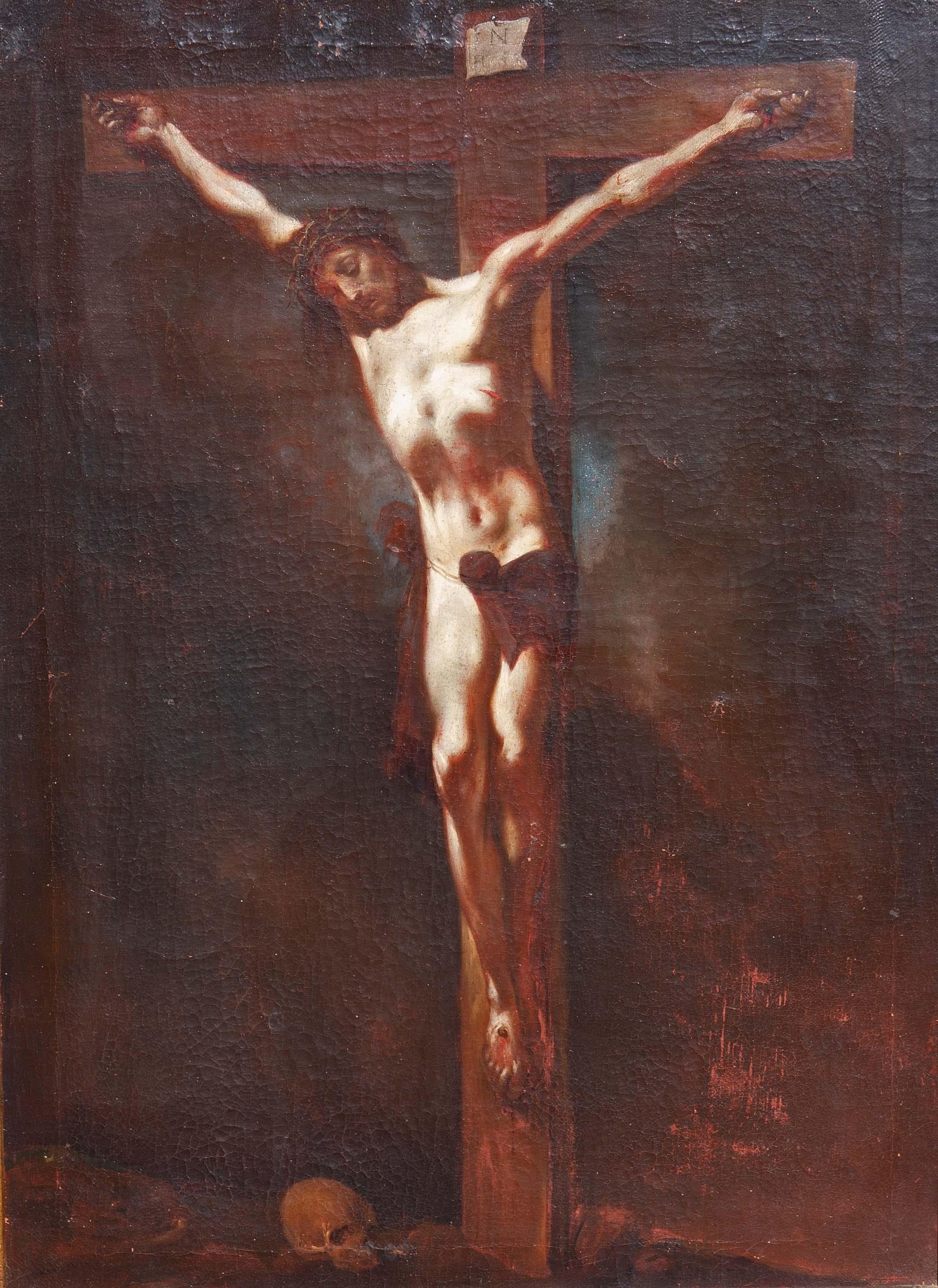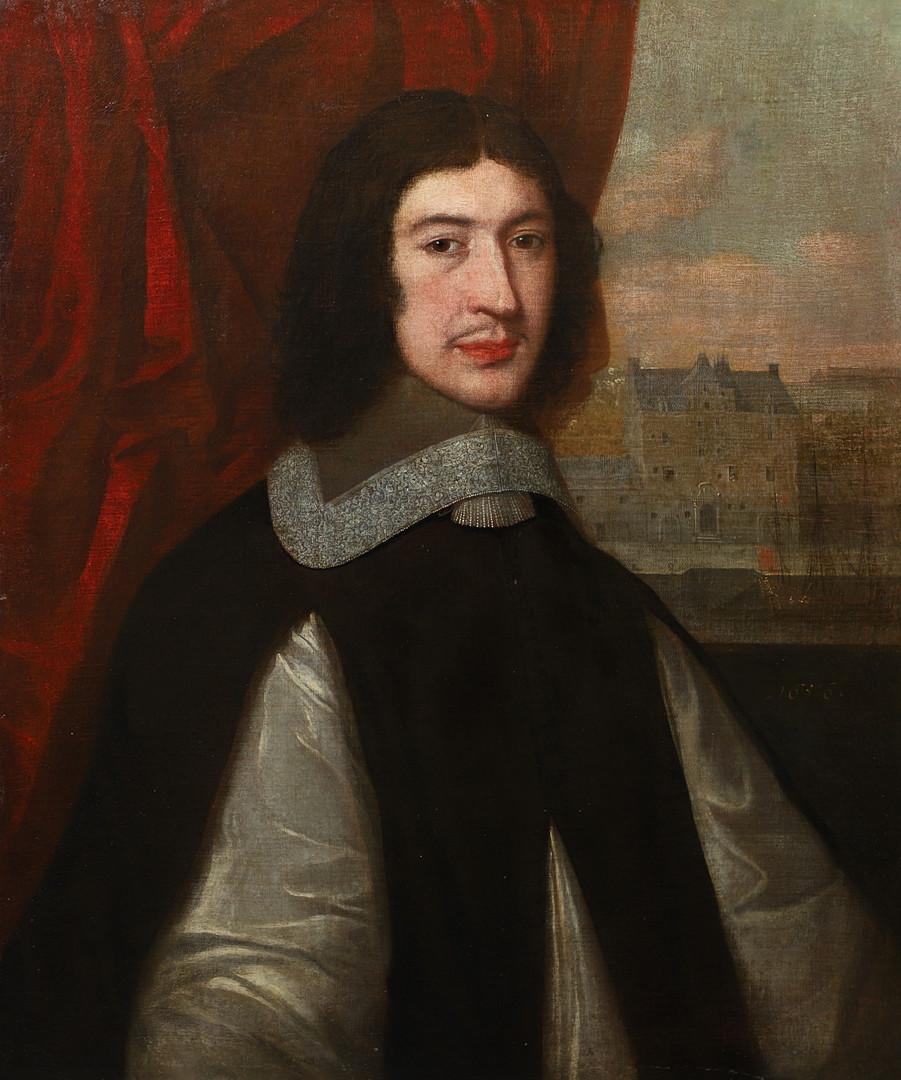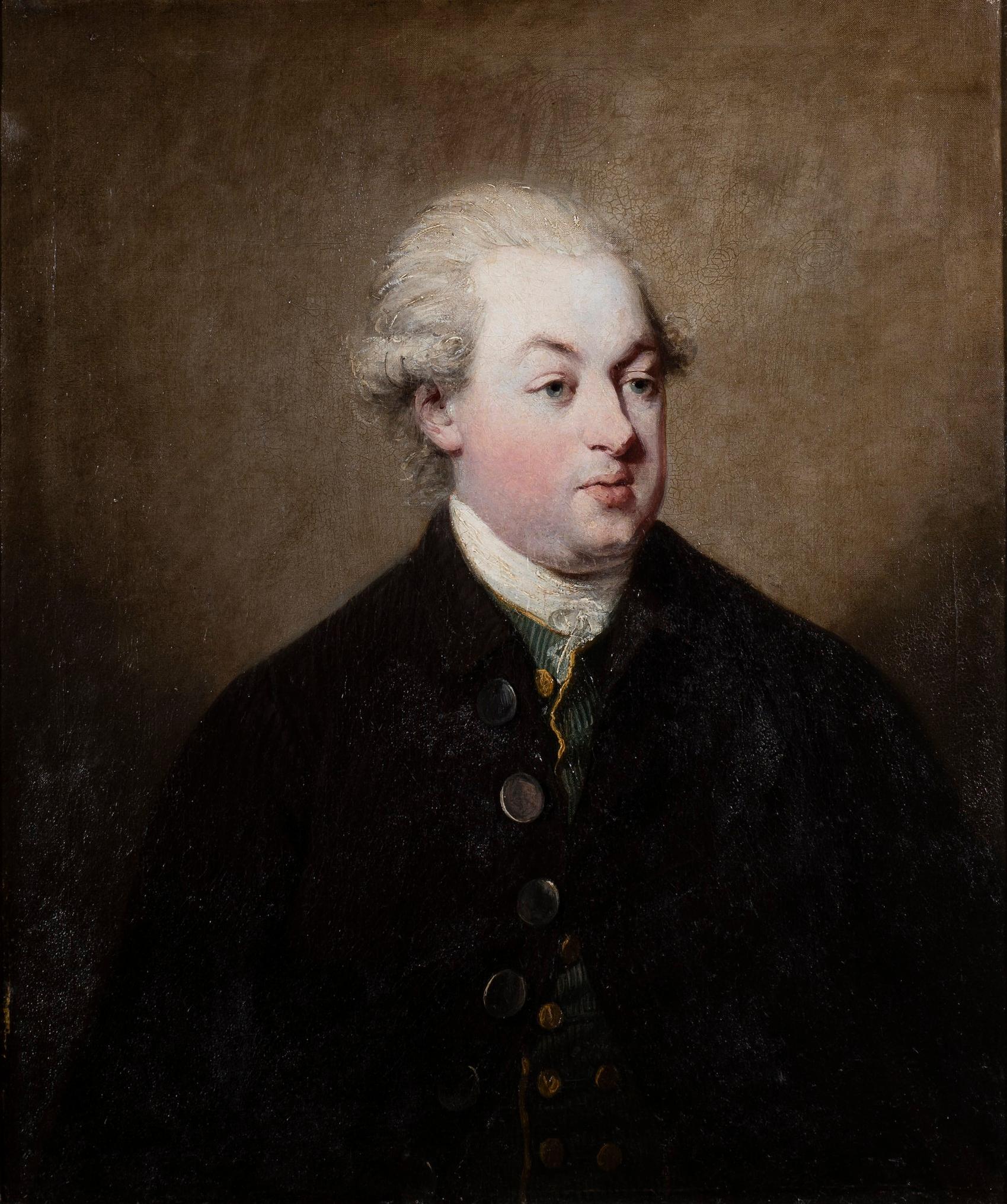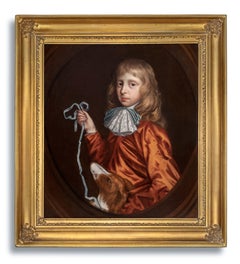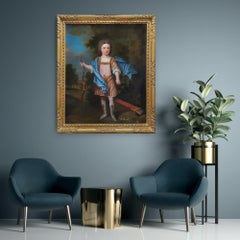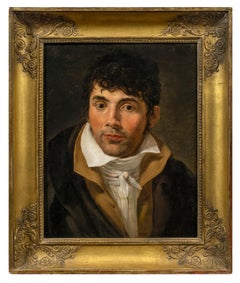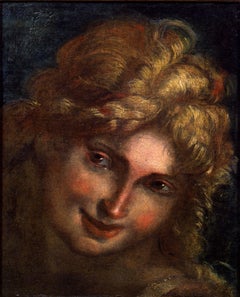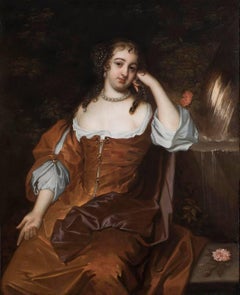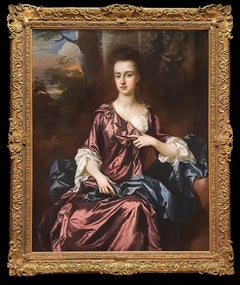
Portrait of an Elegant Lady c.1690’s, Oil on Canvas Painting, John Closterman
Want more images or videos?
Request additional images or videos from the seller
1 of 11
John ClostermanPortrait of an Elegant Lady c.1690’s, Oil on Canvas Painting, John Closterman1690's
1690's
About the Item
- Creator:John Closterman (1660 - 1711, British)
- Creation Year:1690's
- Dimensions:Height: 58.27 in (148 cm)Width: 48.43 in (123 cm)Depth: 2.37 in (6 cm)
- Medium:
- Movement & Style:
- Period:Late 17th Century
- Condition:Good condition - ready to hang. All of our paintings have been inspected by one of our conservators prior to going on sale; this ensures that the condition is very good.
- Gallery Location:London, GB
- Reference Number:1stDibs: LU119918101852
About the Seller
5.0
Vetted Seller
These experienced sellers undergo a comprehensive evaluation by our team of in-house experts.
Established in 1998
1stDibs seller since 2019
30 sales on 1stDibs
Typical response time: 1 hour
More From This SellerView All
- Portrait of a Young Gentleman, Pieter Van Der Dvssen; by Jan van HaensbergenBy Jan Van HaensbergenLocated in London, GBPortrait of a Young Gentleman, Pieter Van Der Dvssen c.1664 Jan van Haensbergen (1642–1705) This charming portrait is an excellent example of late 17th century child portraiture and is from one of the most prolific periods in art history – the Dutch Golden Age. A vast number of artists produced work to fulfil the demands and tastes of a broad Dutch society, and many cities in the Netherlands developed into distinct artistic centres, characterised by style and specialities of subject. The quality of our portrait is similar to the works of the highly specialised ‘fijnschilders’, who were working in Leiden at the time; these artists executed meticulous small-scale paintings. As with the artist’s other works of children, Haensbergen painstakingly recorded many details including a fine depiction of the face, and the surface effects of the materials and the pearl clasps. The young sitter is Walther Bernt Pieter Van der Dussen. He was born into a wealthy noble Catholic family in Delft in 1654. In this portrait he would be around ten years of age, dating the work to circa 1664, which is also the year before the artist’s marriage to Johanna van Heusden. The Van der Dussen family were great patrons of the arts and commissioned a number of major works from eminent artists in Delft & Amsterdam. Van der Dussen died in 1716. The wooded setting, the lamb, and the “picturesque” or “Roman” dress...Category
17th Century Old Masters Portrait Paintings
MaterialsCanvas, Oil
- Portrait of a Young Gentleman and Pet Dog c.1680, Antique oil on Canvas PaintingBy (Circle of) Mary BealeLocated in London, GBThe portrait genre was valued particularly highly in English society. Neither landscapes nor allegorical pictures were ever priced so highly at exhibitions and in the trade as depictions of people, from the highest aristocracy to scholars, writers, poets and statesmen. This charming portrait, presented by Titan Fine Art, of a fashionable young gentleman and his faithful pet is an excellent example of 17th century child portraiture in England. There is a remarkable beauty and sensitivity to the portrait. The face, particularly well rendered, has captured the character of this young man – both charming and at the same time mischievous. Only the playful attention of a small dog suggests anything less than patrician dignity. Symbolism was important in portraiture and it provided a pointed and aspirational narrative that would not have been lost on contemporary viewers. For example, the presence of the dog, which was likely the boy’s pet, is at once a charming pictorial device and also a clear allusion to fidelity, trust and loyalty. The hairstyle and the attire, notably the type of cravat with the blue ribbon, help to date this portrait to between 1670 to 1685. Until the late eighteenth century children were dressed as adults - boys were dressed like men in breeches, vests, and coats between four and seven years of age. The expensive lace is an indication to his family’s wealth. Held in a good quality and condition antique gilded frame. Born in Suffolk, Mary Beale, nee Cradock (1633-1699) was employed by many of the most distinguished persons of her time including nobility, landed gentry, and clergymen. Technically accomplished, her paintings are noteworthy for their honest and sympathetic portrayal. In 1651 she married Charles Beale...Category
17th Century Old Masters Portrait Paintings
MaterialsCanvas, Oil
- Portrait of Young Gentleman, Lord George Douglas, Arcadian Landscape c.1710Located in London, GBPortrait of Young Gentleman, Lord George Douglas, in an Arcadian Landscape c.1710 Attributed to Charles D'Agar (1669-1723) Depicted with bow in hand and situated against an Arcadian...Category
18th Century Old Masters Portrait Paintings
MaterialsCanvas, Oil
- Portrait of an Elegant Lady in a Red Silk Dress, Beautiful Antique Frame c.1720By Jonathan Richardson the ElderLocated in London, GBThis beautiful portrait was painted circa 1725 and is a fine example of the English eighteenth century portrait style. The artist has chosen to depict the lady against a plain background wearing a simple red silk dress and transparent headdress hanging down the back. The sitter is not shown with jewellery or any other elements to distract the viewer’s attached, thus highlighting the beauty of the young sitter. This restrained manner achieves a sense of understated elegance. The portrait genre was valued particularly highly in English society. Neither landscapes nor allegorical pictures were ever priced so highly at exhibitions and in the trade as depictions of people, from the highest aristocracy to scholars, writers, poets and statesmen. With the rich colouring and lyrical characterisation, these works are representative of the archetypal English portrait and is are very appealing examples of British portraiture...Category
18th Century Old Masters Portrait Paintings
MaterialsCanvas, Oil
- Portrait of Lady Anne Tipping née Cheke c.1705, English Aristocratic CollectionBy Kneller GodfreyLocated in London, GBTitan Fine Art present this exquisite portrait, that formed part of a historic collection of an English aristocratic family, Lord and Lady Sandys at their magnificent baroque and Reg...Category
18th Century Old Masters Portrait Paintings
MaterialsCanvas, Oil
- Portrait of a Gentleman in Armour and Mauve Cloak c.1740; Louis Tocque, PaintingLocated in London, GBThe sitter in this superb portrait, presented by Titan Fine Art, is shown with the grandiloquence characteristic of the eighteenth-century French school of painting. The young nobleman has been portrayed wearing an ingeniously embellished French ceremonial armour, a mauve cloak, and an abundance of cascading curls falling below his shoulders. Our portrait proclaims to every onlooker that this is a superior being. The manner in which portraits were painted was set out by the terms of the commission and usually marked significant life events such as a betrothal, a death, elevation of rank… but they almost always emphasised the wealth and importance of the sitter. This type of portrait had become a standard format for aristocratic portraiture in Europe during the last quarter of the seventeenth century up to the middle of eighteenth century. Incorporated into the background was often a raging battlefield or a military encampment; our portrait is free from these trappings and contains a dramatic moody sky ensures the viewer focuses mainly on the subject. The features of the sitter’s face have been captured with great sensitivity, his confident gaze perhaps reflecting the near invincibility afforded by this steel suit. The flamboyance and penetrating sense of character, lending an air of noble expectancy to the composition, seems almost eclipsed by the artist's virtuosic handling of paint. It is not hard to understand why many wealthy sitters commissioned the artist to paint their portraits. Such fine and ornate armour was not actually used on a battlefield and thus its portrayal in portraiture was largely symbolic of a sitter’s wealth and status as well as a claim of succession to a chivalrous tradition. The style of hair and neckcloth were fashionable circa 1740. Held in an exquisite eighteenth century carved and gilded frame - a fine work of art in itself. Louis Tocqué was a very successful French portrait painter active during the Rococo period of art. His work was known for its attention to detail, its portrayal of the character of the sitter, the refined postures, and the delicacy of the rendered draperies. He created both realistic and expressive portraits. Tocqué was born in Paris in 1696 and trained with the famous portrait painters Hyacinthe Rigaud, Nicolas Bertin, and Jean Marc Nattier whose daughter he later married. He entered the Academy in 1731 and became a full member in 1734 with his portraits of Galloche and the sculptor Jean Louis Lemoine, and he pursued a brilliant career as a portrait painter, receiving numerous commissions from members of the French aristocracy and royalty. His works were highly sought after by collectors of the time, and his reputation earned him the appointment of official portrait painter to the court of France in 1746 – in fact he stayed at most of the courts in northern Europe. From 1737 to 1759 he exhibited a large number of works at the Salon. Tocqué's paintings can be found in museums and private collections around the world. Recent sales...Category
18th Century Old Masters Portrait Paintings
MaterialsCanvas, Oil
You May Also Like
- Portrait of a GentlemanLocated in New York, NYCircle of Jacques-Louis David (French, 18th Century) Provenance: Private Collection, Buenos Aires Exhibited: “Art of Collecting,” Flint Institute of Art, Flint, Michigan, 23 November 2018 – 6 January 2019. This vibrant portrait of young man was traditionally considered a work by Jacques-Louis David, whose style it recalls, but to whom it cannot be convincingly attributed. Rather, it would appear to be by a painter in his immediate following—an artist likely working in France in the first decade of the nineteenth century. Several names have been proposed as the portrait’s author: François Gérard, Louis Hersent, Anne-Louis Girodet (Fig. 1), Theodore Gericault, and Jean-Baptiste Wicar, among others. Some have thought the artist Italian, and have proposed Andrea Appiani, Gaspare Landi...Category
18th Century Old Masters Paintings
MaterialsCanvas, Oil
$45,000 - Head of an AngelLocated in New York, NYProcaccini was born in Bologna, but his family moved to Milan when the artist was eleven years old. His artistic education was evidently familial— from his father Ercole and his elder brothers Camillo and Carlo Antonio, all painters—but his career began as a sculptor, and at an early age: his first known commission, a sculpted saint for the Duomo of Milan, came when he was only seventeen years old. Procaccini’s earliest documented painting, the Pietà for the Church of Santa Maria presso San Celso in Milan, was completed by 1604. By this time the artist had made the trip to Parma recorded by his biographers, where he studied Correggio, Mazzola Bedoli, and especially Parmigianino; reflections of their work are apparent throughout Procaccini's career. As Dr. Hugh Brigstocke has recently indicated, the present oil sketch is preparatory for the figure of the angel seen between the heads of the Virgin and St. Charles Borrommeo in Procaccini's altarpiece in the Church of Santa Afra in Brescia (ill. in Il Seicento Lombardo; Catalogo dei dipinti e delle sculture, exh. cat. Milan 1973, no. 98, pl. 113). As such it is the only known oil sketch of Procaccini's that can be directly connected with an extant altarpiece. The finished canvas, The Virgin and Child with Saints Charles Borrommeo and Latino with Angels, remains in the church for which it was painted; it is one of the most significant works of Procaccini's maturity and is generally dated after the artist's trip to Genoa in 1618. The Head of an Angel is an immediate study, no doubt taken from life, but one stylistically suffused with strong echoes of Correggio and Leonardo. Luigi Lanzi, writing of the completed altarpiece in 1796, specifically commented on Procaccini's indebtedness to Correggio (as well as the expressions of the angels) here: “Di Giulio Cesare...Category
17th Century Old Masters Figurative Paintings
MaterialsCanvas, Paper, Oil
- Portrait of a Lady, 17th Century Flemish Oil Old MastersBy Jacob HuysmansLocated in London, GBJacob Huysmans Flemish 1633 - 1696 Portrait of a Lady Oil on canvas Image size: 49 x 40 ¼ inches Gilt frame Huysmans was born in Antwerp and came to England during the reign of Charles II where he became one of the fashionable painters of the court.. The diarist Samual Pepys noted the artist as capable of a more exact likeness than Lely. Certainly the diarist records that by August 1664 in the circle of Queen Catherine...Category
17th Century Old Masters Portrait Paintings
MaterialsCanvas, Oil, Acrylic
- 18th c. French Portrait of Princess of Bourbon as Hebe, Pierre Gobert, c. 1730By Pierre GobertLocated in PARIS, FRPortrait of Princess of Bourbon as Hebe Pierre Gobert, circa 1730 Presumed portrait of Elisabeth Thérèse Alexandrine of Bourbon-Condé, Mademoiselle de Sens, depicted as the goddess Hebe kidnapped by Zeus, transformed into an eagle. 18th century French School, around 1730 Pierre Gobert (1662-1744) and workshop Oil on canvas Dimensions: canvas: h. 129 cm, w. 95cm Dimensions: framed: h. 156 cm, w. 124cm Louis XIV style giltwood and cardved wood frame Large and imposing portrait of the young princess portrayed seated on an eagle in the heavens. Seen from the front, the princess is dressed in a low-cut white chiffon dress, exposing her throat. Delicately made-up oval face, dominated by large blue-gray eyes is surrounded by powdered hair, raised, releasing the forehead and the ears, and of which some locks fall on his shoulder. A large blue scarf passed over the shoulder covers her knees and flies in the wind. A garland of flowers coming from the back goes over the knees and down again on the eagle. In her right hand she holds a golden goblet and in her left hand an ewer. The eagle supporting the young woman seizes in its claws the thunderbolt (the beam of fiery lightning), the attribute of Zeus. The figure of the young woman is enlivened by the fluidity of the antique drapes...Category
Early 18th Century Old Masters Portrait Paintings
MaterialsCanvas, Oil
$23,379 Sale Price20% Off - 19th century portrait painted in St Petersburg in 1819Located in London, GBSigned, inscribed and dated, lower right: 'Geo Dawe RA St Petersburgh 1819', also signed with initials, lower centre: 'G D RA'; and signed and inscribed verso: 'Geo Dawe RA Pinxit 1819 St Petersburgh'; Also inscribed on the stretcher by Cornelius Varley with varnishing instructions. Collections: Private collection, UK, 2010 Literature: Galina Andreeva Geniuses of War, Weal and Beauty: George Dawe...Category
19th Century Old Masters Portrait Paintings
MaterialsCanvas, Oil
- Portrait of a Lady with a ChiqueadorLocated in New York, NYProvenance: Torres Family Collection, Asunción, Paraguay, ca. 1967-2017 While the genre of portraiture flourished in the New World, very few examples of early Spanish colonial portraits have survived to the present day. This remarkable painting is a rare example of female portraiture, depicting a member of the highest echelons of society in Cuzco during the last quarter of the 17th century. Its most distinctive feature is the false beauty mark (called a chiqueador) that the sitter wears on her left temple. Chiqueadores served both a cosmetic and medicinal function. In addition to beautifying their wearers, these silk or velvet pouches often contained medicinal herbs thought to cure headaches. This painting depicts an unidentified lady from the Creole elite in Cuzco. Her formal posture and black costume are both typical of the established conventions of period portraiture and in line with the severe fashion of the Spanish court under the reign of Charles II, which remained current until the 18th century. She is shown in three-quarter profile, her long braids tied with soft pink bows and decorated with quatrefoil flowers, likely made of silver. Her facial features are idealized and rendered with great subtly, particularly in the rosy cheeks. While this portrait lacks the conventional coat of arms or cartouche that identifies the sitter, her high status is made clear by the wealth of jewels and luxury materials present in the painting. She is placed in an interior, set off against the red velvet curtain tied in the middle with a knot on her right, and the table covered with gold-trimmed red velvet cloth at the left. The sitter wears a four-tier pearl necklace with a knot in the center with matching three-tiered pearl bracelets and a cross-shaped earing with three increasingly large pearls. She also has several gold and silver rings on both hands—one holds a pair of silver gloves with red lining and the other is posed on a golden metal box, possibly a jewelry box. The materials of her costume are also of the highest quality, particularly the white lace trim of her wide neckline and circular cuffs. The historical moment in which this painting was produced was particularly rich in commissions of this kind. Following his arrival in Cuzco from Spain in the early 1670’s, bishop Manuel de Mollinedo y Angulo actively promoted the emergence of a distinctive regional school of painting in the city. Additionally, with the increase of wealth and economic prosperity in the New World, portraits quickly became a way for the growing elite class to celebrate their place in society and to preserve their memory. Portraits like this one would have been prominently displayed in a family’s home, perhaps in a dynastic portrait gallery. We are grateful to Professor Luis Eduardo Wuffarden for his assistance cataloguing this painting on the basis of high-resolution images. He has written that “the sober palette of the canvas, the quality of the pigments, the degree of aging, and the craquelure pattern on the painting layer confirm it to be an authentic and representative work of the Cuzco school of painting...Category
17th Century Old Masters Paintings
MaterialsCanvas, Oil
Recently Viewed
View AllMore Ways To Browse
Antique 1910s Drawings
Antique Dr Scale
Large Antique Portraits Of People
Large Aristocratic Portrait
John Carlos
John Gilbert Oil
Sir Peter Lely
John Riley
Sir Peter Lely Portraits
Spanish Royalty Painting
17th C Portrait Lely
17th Century Sir Peter Lely Oil Portrait
Sir John Gilbert
Lady Spencer
Circle Of Sir Godfrey Kneller
Studio Of Sir Peter Lely
Les Rogers
Jonathan Richardson



